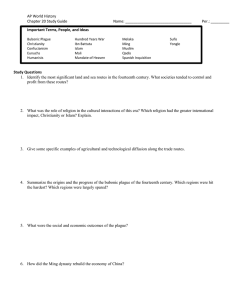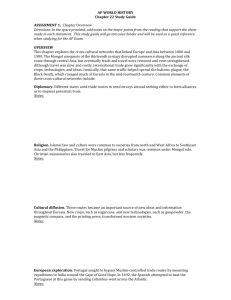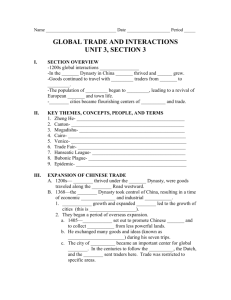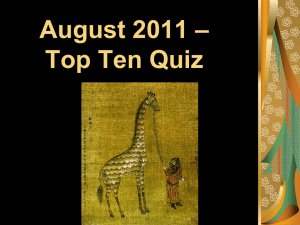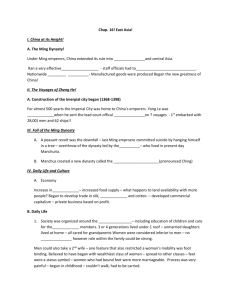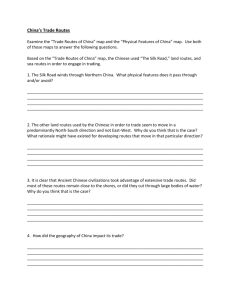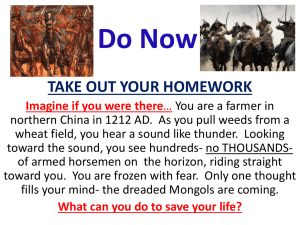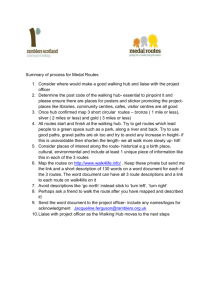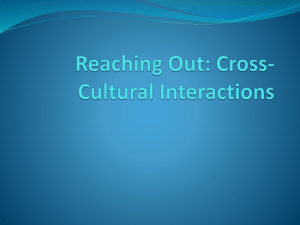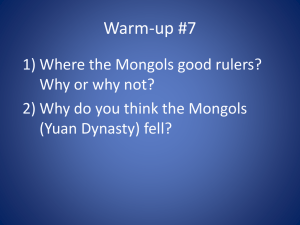World History: Cross-Cultural Interactions 1000-1500
advertisement
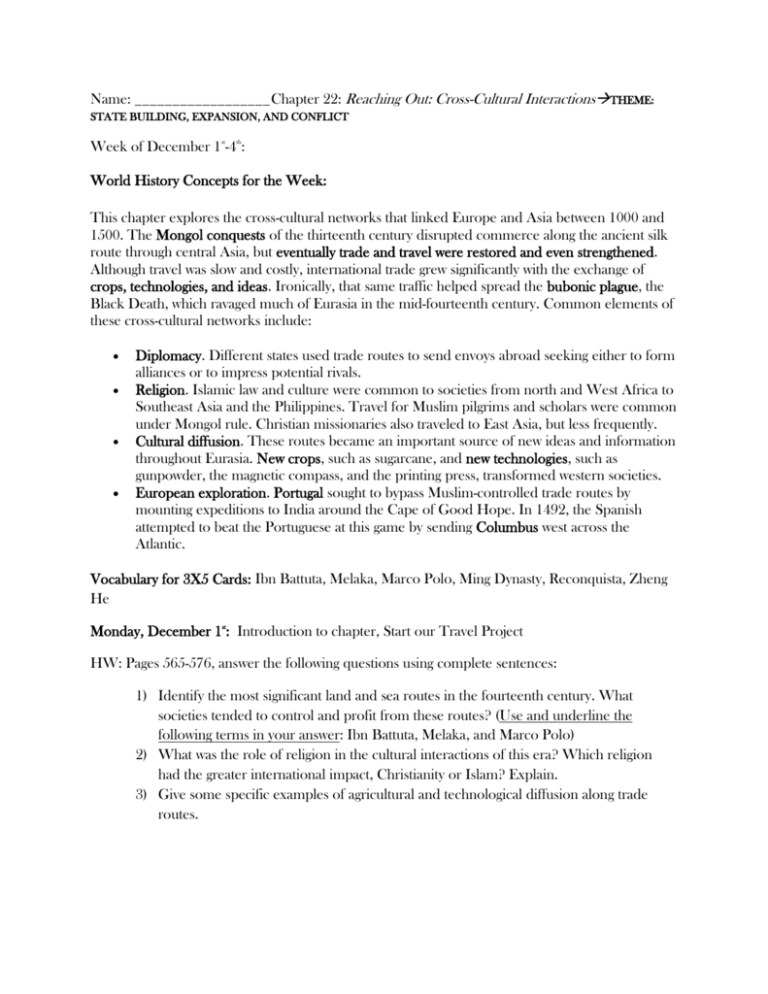
Name: __________________ Chapter 22: Reaching Out: Cross-Cultural InteractionsTHEME: STATE BUILDING, EXPANSION, AND CONFLICT Week of December 1st-4th: World History Concepts for the Week: This chapter explores the cross-cultural networks that linked Europe and Asia between 1000 and 1500. The Mongol conquests of the thirteenth century disrupted commerce along the ancient silk route through central Asia, but eventually trade and travel were restored and even strengthened. Although travel was slow and costly, international trade grew significantly with the exchange of crops, technologies, and ideas. Ironically, that same traffic helped spread the bubonic plague, the Black Death, which ravaged much of Eurasia in the mid-fourteenth century. Common elements of these cross-cultural networks include: Diplomacy. Different states used trade routes to send envoys abroad seeking either to form alliances or to impress potential rivals. Religion. Islamic law and culture were common to societies from north and West Africa to Southeast Asia and the Philippines. Travel for Muslim pilgrims and scholars were common under Mongol rule. Christian missionaries also traveled to East Asia, but less frequently. Cultural diffusion. These routes became an important source of new ideas and information throughout Eurasia. New crops, such as sugarcane, and new technologies, such as gunpowder, the magnetic compass, and the printing press, transformed western societies. European exploration. Portugal sought to bypass Muslim-controlled trade routes by mounting expeditions to India around the Cape of Good Hope. In 1492, the Spanish attempted to beat the Portuguese at this game by sending Columbus west across the Atlantic. Vocabulary for 3X5 Cards: Ibn Battuta, Melaka, Marco Polo, Ming Dynasty, Reconquista, Zheng He Monday, December 1st: Introduction to chapter, Start our Travel Project HW: Pages 565-576, answer the following questions using complete sentences: 1) Identify the most significant land and sea routes in the fourteenth century. What societies tended to control and profit from these routes? (Use and underline the following terms in your answer: Ibn Battuta, Melaka, and Marco Polo) 2) What was the role of religion in the cultural interactions of this era? Which religion had the greater international impact, Christianity or Islam? Explain. 3) Give some specific examples of agricultural and technological diffusion along trade routes. Tuesday, December 2nd: Working on Diary Project HW: Pages 576-585: 4) Summarize the origins bubonic plague of the fourteenth century. Which regions were hit the hardest? Which regions were largely spared? 5) What were the social and economic outcomes of the plague? 6) How did the Ming dynasty rebuild the economy of China? (Use and underline the following terms in your answer: Ming Dynasty) 7) Note the kind of state to emerge in the fifteenth century in northern Italy, France, England, and Spain. Which was the most powerful state at this time? (Use and underline the following terms in your answer: reconquista) 8) What were some of the distinctive elements of the artistic Renaissance of western Europe in the fifteenth century? Wednesday, December 3rd (periods 3 and 5), Thursday, December 4th (period 4): Finalizing Diaries, REMEMBER TO TURN IN TIMELINES TODAY!!!! HW: Pgs. 585-590 9) How were the Ming Chinese able to establish a forceful presence in the Indian Ocian in the fifteenth century? When and why did this presence cease? (Use and underline the following terms in your answer: Zheng He) 10) What were the Portuguese objectives in the exploration of the coast of west Africa? What did they accomplish? 11) What did Columbus hope to accomplish when he set forth across the Atlantic in 1492? What did he achieve? Friday, December 5th (No School, Teacher In-Service Day)Homework and cards due Monday, quiz over 21 and 22 will be that day as well.
